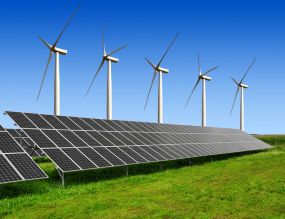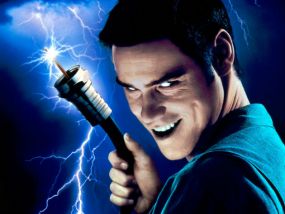What an incredible time to be alive! The sports betting business is booming as more and more states pass legislation to legalize and collect, on the once-taboo activity. Whether or not you’re new to sports betting or you’ve had means of betting for some time now, the fact remains that every bettor needs to have a strategy to have any shot at being successful. In that last couple of years, I would say that I transitioned from a true average Joe bettor to a more informed and strategic amateur bettor. The first step in the progression for me was identifying a strategy and sticking to it.
I don’t make a living betting on sports. As much as I would love to eventually learn to handicap and create my own power ratings, it’s not something that is in the cards for me right now. I would venture to guess that a majority of sports bettors feel this way. So what’s the next best thing? Start your sports betting fundamentals with a contrarian strategy.
A contrarian is simply someone who “opposes or rejects popular opinion”. In sports betting this is also referred to as fading the public. I’ve been the public. The guy betting on my basic instinct and bias. Aaron Rodgers and Drew Brees on Monday Night Football, how can I not take the over! Of course, I would look at the line, but my bias placed the bet before I had even grabbed my phone. Sportsbooks and oddsmakers are very aware of public bias and they build this into their lines. Contrarian bettors take advantage of this to get more value in our picks.
Identifying public bias and understanding how the books play into this is the most important tenet of being a contrarian bettor. Favorites are a staple of the public bettors. The books build this bias into their numbers. So, let’s say a book runs their power rankings and it shows that Seattle should be a 4-point favorite, they will shade the line towards Seattle and make them, for sake of argument, 4.5 or 5 point favorites knowing the public is more often than not taking them anyway. Immediately out of the gate a contrarian bettor is getting a half-point to full point value simply because of public betting bias. The same is true for home teams. So, using the same example from above, Seattle is a 5-point favorite with the public bias computed in, if they are at home you would see this line increase even more making Seattle -8 or perhaps even higher. That is not to say that there are not advantages to playing at home, but rather that the bookmakers already take this into account when setting the number and essentially protect against the home field advantage bias. A team like Seattle could see a shade towards their home field advantage because it’s widely known that Seattle is a tough stadium to play in with the 12th man. Notice that I didn’t even mention who Seattle was playing. Obviously, the opponent factors into the lines, but the point I am trying to make is purely to show how public betting bias plays into the creation of lines. A contrarian bettor in this fictional scenario is already gaining, at minimum, a half-point of extra value before we even break down other factors.
Overs are another popular pick for public bettors. Who doesn’t want to see points? I will be the first to admit it is more fun to watch a shootout and more scoring, however, this is another bias that is built into the number. Much like the spread on the favorite is shaded to account for public bias, so is the over. So, let’s stick to the football examples. A matchup formula may indicate that a game total will be around 47 points. The house will shade this line to build in public betting bias and would open the line at 47.7, 48, or 48.5. Again, contrarians gain inherent value looking at unders to play because of this built-in adjustment.
Favorites, home teams, and overs are just 3 examples of how being a contrarian immediately builds value in your bets. Ranked vs unranked bias shades the lines toward the ranked team. A team with a better win-loss record may see shaded lines. Even recent games play into the psychological effects of betting. A team coming off a huge win is more likely to receive heavy betting from public bettors because that big win is fresh in their minds. At the end of the day, it is extremely important to recognize these biases and even more important to understand that the bookmakers have already taken them into account.
Being a contrarian is simply a foundation. It’s a starting point for which to build fundamentals in the way you bet and the games you bet on. It is not the end all be all, however, it does allow you to take advantage of the betting market and in many cases even capitalize on the extra value in your bets because you are fading the public bias.
There's no denying that the climate is changing due to all the fossil fuels that we're burning. It would be great if we could just replace all of that, but it's going to take gradual changes. What solutions are actually out there to replace all of the stuff we've been burning for the last 150 years?
Listen to the Retrospectical Podcast Episode 18 - Clean Alternative Energy Today & Tomorrow
We currently still burn coal and natural gas for the majority of the electricity in the United States. Natural gas is only about half as bad as coal, and has been taking over some of the share that coal once had. These are still both ultimately a limited resource, natural gas reserves in the United States are projected to last just over 80 years. Coal reserves are larger, projected to last 260 years at current rates, but that's an awful lot of carbon to be released into the atmosphere.
It's simply unreasonable to think that society could continue long-term and continue to rely on fossil fuels.
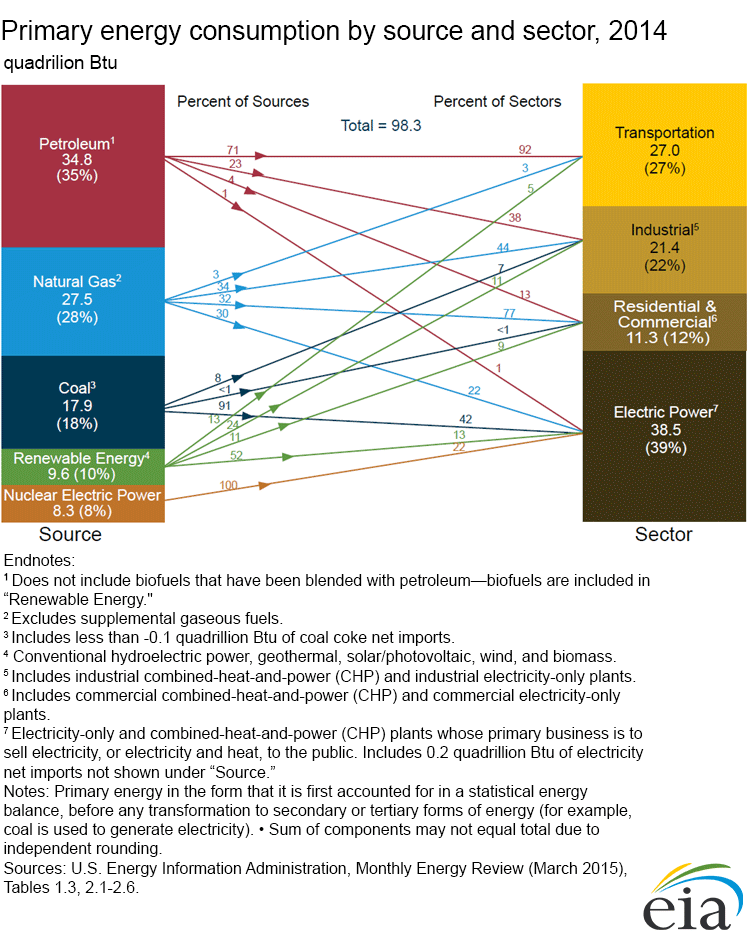
Wind – Wind energy is consistent on a year-to-year basis in terms of total power generated, however it does fluctuate a lot over the short term. Sometimes, the wind just isn’t blowing. It’s a very cheap alternative to coal and gas, after all, the wind is free. Wind farms can be found all over the country now with 5% of the US's energy is now wind generated.
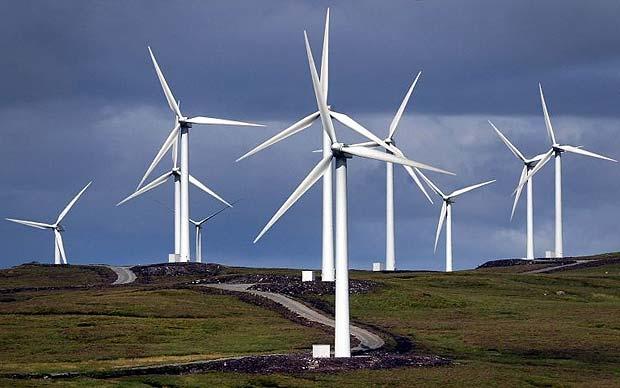
Denmark has 14 offshore wind farms which powers about 40% of their homes. On some windy days, the entire power consumption of the country can be covered by wind power alone. Offshore wind is more consistent and has less of a visual impact (a pet peeve of mine – who really has a problem with the look of a new wind turbine anyways?). The downside is that construction and maintenance of offshore wind farms is much more expensive, for obvious reasons. 11.4% of the electricity in the EU is now generated by wind power, with the entire world at 4%.
How does it work? – Like most ways of generating electricity, all it takes is the rotation of some magnets, and viola, you’ve got power. Wind turbines are some of the most basic, borrowing a few tricks from the airplane industry to make the fins more efficient in the wind, they just rotate a central shaft and electricity is made.
What are the benefits? – Well, aside from the initial capital costs, the cost to operate a wind turbine is very low, with maintenance being the only real expense. There is no fuel for the turbines to run on, and the impact to the environment is minimal. Wind farms do need to be spread out over a large area (typically, they are separated by a distance of at least 7x the diameter of the fins), but those areas can still be used for farming and other land-intensive uses. Putting a wind farm out at sea further reduces its impact on regular life and increases its efficiency, at a higher initial and maintenance cost, of course.
What are the downsides? – Well, to put it simply, they don’t work if the wind isn’t blowing! Wind power is efficient and reliable over the long haul, but it must be supplemented with other forms of electricity to be a part of the power grid.
One of the interesting things you can do with wind is compliment it with hydroelectric power. When the wind is working well or there is little demand, you can shut off the hydroelectric dam, or even pump water back into the reservoir (the greater the pressure behind a hydroelectric dam, the more power it generates).

Solar - Solar prices continue to fall, with prices continuing to approach the cost of fossil fuels, making solar power a very attractive clean energy option. Solar power has experienced incremental improvements over the last couple of decades that have made it more and more competitive in the modern markets.
Like wind energy, solar is intermittent, meaning that it must either be used immediately, stored immediately, or sent into the power grid along transmission lines to be used immediately. Solar is still emerging when it comes to widespread use, accounting for only 0.6% of all energy sources in the US.
How does it work? – Electricity can be generated with the sun in two different ways. First, there are traditional solar panels using photovoltaic cells, commonly known as solar cells. This technology is what has seen gradual improvements over the last couple of decades and now these panels can be seen in giant arrays that are essentially power plants – the largest of which can generate 579 MW (about the capacity of the US’s second largest wind farm). Unlike more traditional ways of generating electricity, there is no heating of water involved here. The sunlight shining on the PV cells knocks electrons loose and creates a potential difference – thus creating a voltage and usable electricity. This process is more efficient as the sun gets brighter (sunny days) or more intense (more direct rays, nearer to the equator).
The second way to create energy with solar power is using a system to concentrate the solar power, also known as solar thermal energy. There are several implementations of this technology currently in use, including the parabolic trough. In this method, a tube of some kind of fluid is placed at the focal point of a reflective parabola and the entire unit is rotated throughout the day for maximum effect. This is currently the most efficient use of land in a solar power setup. You can also make a solar power tower, which is just kind of badass. In Spain, the PS10 and PS20 solar plants have been built and they are pretty impressive looking. A field of mirrors are all set just right and rotate throughout the day so they all concentrate the sunlight into a very small area on the tower, which superheats water to 275 degrees Celsius.
 A solar thermal energy plant in Spain.
A solar thermal energy plant in Spain.
What are the benefits? – Generally considered much more aesthetically pleasing than wind turbines, solar panels and solar farms do not suffer from the same NIMBY issues that have kept wind from spreading more. Solar also lends itself to a more “off the grid” approach. In areas with high amounts of sunlight, a battery storage system like Tesla’s Powerwall is all you need to make sure you have electricity 24/7. Solar is more consistent than
In some areas of the country, you can have your house totally done up with solar panels and the cost is basically free. A company called Sunpower will install all the panels and hook them up to the system for zero money up front. You wind up making monthly payments that are roughly equivalent to your old utility bill to pay down the system. You can also, like wind power, sell your excess energy back to the power grid. Imagine a nice hot day where you’re running your AC, watching TV, eating ice cream and still sending spare power back to the grid for a profit.
What are the downsides? - Well, there’s still a long way to go in terms of efficiency in solar power. The best solar cells are still only about 40% efficient, so there’s still a lot of room for improvement. The initial cost is also very high, and could easily take 10-15 years to pay off the investment (the Sunpower option looks like it could be 20 years). The availability of sunlight is also an issue – people living in more northern latitudes are not going to get as much out of solar energy and thus it is more expensive. PV cells are also made up of some elements that can be toxic to the environment and these items must be disposed of properly. You also need a lot of land if you want to build a solar plant, and unlike wind, this land can’t really be used for farming. Finally, as we know here in Chicago, the sun is just not going to shine all the time.
Hydroelectric – Hydroelectric power is probably the oldest and most well established clean energy source, with it being produced in 150 countries. Hydroelectric plants account for 9 of the 10 largest power plants in the world. China alone generates 17% of its entire domestic energy with hydroelectric plants, aided by the new Three Gorges dam, the largest power plant of any kind in the world. The Three Gorges Power plant generates a whopping 22,500MW, compared to the US’s largest plant, Grand Coulee, producing 6800MW. (Hoover dam has a capacity of 2000 MW).
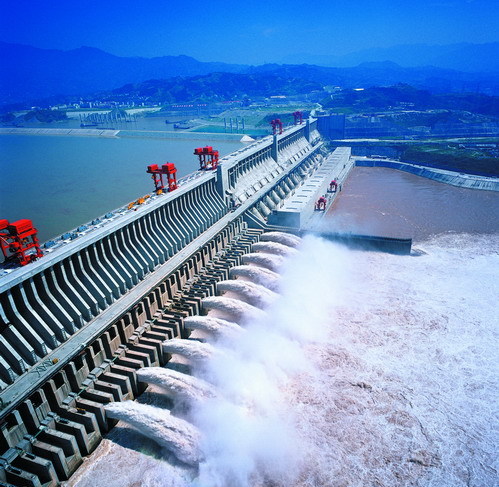 The Three Gorges Dam in China.
The Three Gorges Dam in China.
Some countries are already very big into hydroelectric power. Norway gets 98-99% of its electricity exclusively from hydroelectric sources. Paraguay gets 100% of its electricity from hydroelectric dams, thanks to the giant Itaipu dam on the Paraguay-Brazil border. Paraguay actually exports about 90% of the energy it creates to Brazil, thanks to this and several other dams throughout the country.
How does it work? – In most cases, certainly in all of the largest cases, a large dam is built in order to build up a reservoir so there is a constant supply of water with a very high pressure behind it. A larger height behind the dam results in an increase flow rate of the water and thus more power is generated. Then it’s very simple, just like most power plants, water (this time it’s not heated to steam, but used as its falling) turns a turbine which generates the electricity needed.
What are the benefits? – Hydro power is very flexible, needing only a couple of minutes to go from a cold start to a full load. This allows power production from the hydro plant to be increased or decreased based on demand. These plants are relatively cheap to run and build (the three gorges dam will cover their costs in just 5-8 years after full output), and provide very low cost electricity, from only 3 to 5 cents per KWh. It’s also very clean, generating only a bit of Co2 during construction.
What are the downsides? – The large reservoirs that are built to power a hydroelectric dam destroy the environment that once existed there. Large amounts of silt can accumulate upstream, filling up the reservoir in extreme cases. This decreases the nutrients in the water downstream. Dams are also a huge impediment for migrating fish. Water levels can also vary in some areas based on seasonal rain/snow fall and a reduced level in a reservoir will lead to a lower power production. Dam failures can be catastrophic and have killed more people than nuclear accidents.
Nuclear - 20% of our power comes from Nuclear. It's considered a carbon-free energy, but does generate nuclear waste. All of our power plants were built no later than the 1970's, so one of the big problems we have now is that we're working with old technology.
How does it work? - A Nuclear plant works just like any other power plant we have (coal, natural gas, etc). Heat from burning fuel (uranium in this case) is used to heat up water, turn it to steam and use the steam to turn turbines. It's all pretty simple and has lots of benefits, as well as some pretty big downsides.
What are the benefits? - Nuclear power does not produce any carbon emissions - in that sense it's a clean energy and does not in any way contribute to global warming. So this is definitely, when done right, helping our situation right now. Of course, nuclear power does generate some awfully nasty waste, but we'll get to that in a moment.
Traditional ore deposits account for about a 200 year supply at current consumption rates, with about another 280 years undiscovered in the ground. The big hope for the future is that re-use of current waste stockpiles and new technologies can extend the life into the tens of thousands of years.
What are the downsides? - Well, the nuclear waste that is leftover once the life of the fuel rods is over is a big problem. The current storage options are inefficient and could take tens of thousands of years to be safe. The actual power plants are also potentially very dangerous, as has been seen in Chernobyl, Three Mile Island, and most recently in Fukushima.
Clearly, there are some very serious issues when it comes to nuclear power, but it is getting better. For example, a young Nuclear Physicist named Taylor Wilson presented a TED talk in 2013 about his idea for a sealed molten salt reactor that would supply 50 MW on average and only need to be refueled every 30 years. It would even run on decommissioned nuclear weapons. And if you're unsure if Wilson knows what he's talking about - he's the kid who was just 14 years old in 2008 and became the youngest person in history to achieve nuclear fusion.
Other Alternatives - Biomass - This is considered renewable because instead of burning something we dug out of the ground, we burn trash, wood, crops, sewage and animal waste. This is common in some areas where landfills are not practical. In fact, Hawaii uses a significant amount of biomass energy to help supplant wind and solar.
Geothermal energy can also be used to generate electricity. Geothermal is the most efficient renewable source, with plants operating at 92% of its capacity, compared to 34% for wind and 25% for solar. There are also biofuels like ethanol and biodiesel, generally used for vehicles now.
Hydrogen power can provide some remarkable steps forward for transportation fuels, but there are a few hurdles to cross. It is definitely dangerous, but then again, so is gasoline. It also takes a lot of electricity to generate the hydrogen. Once you've got it, however, it burns really clean, the only exhaust is pure water. Currently, hydrogen gas is mainly used for rocket fuel, but there's actually 12 hydrogen gas stations in California, but vehicles are not that widespread since that's the only place you can fill up.
Fusion - Fusion is the holy grail of energy. In theory, a sustained fusion reaction will be clean and actually output more energy than it takes to start the reaction. Currently, however, we're not there yet. It still takes more energy to start the reaction than we get out of it, and we haven't found a way to sustain the reaction yet. There's a huge lab in California, the National Ignition Facility that is working on Fusion. In France, they are building ITER, a gigantic combined effort research megaproject. The goal of this reactor is to actually prove that you can get more energy out than you put into the system. It's designed to output 500MW, while only needing 50MW to operate. It's not happening any time soon though, as this project isn't expected to start running experiments until at least 2027.
The term "cord-cutting" has been thrown around for several years now. Many people are interested in saving money from ever rising cable bills and some people never went in for traditional media in the first place. Usually, cutting the cord means that you're interested in partially or completely replacing your traditional TV watching with alternate sources. This could mean subscribing to Netflix or Hulu (or often times, multiple services), and having some kind of device to watch it on. There are, of course, tons of different combinations.
Retrospectical Ep 16 - Cord Cutting Guide: Cable Alternatives
The Numbers
According to a 2015 study, 15% of American adults qualify as cord-cutters - meaning that they once paid for cable or satellite TV, but no longer do. 24% of people do not have any kind of cable or satellite TV, a majority of them citing the fact that it's too expensive or they can access what they want elsewhere online or via an antenna. This trend, of course, is more prevalent with young people - 19% of young adults have cut the cord and another 16% never had one in the first place.
Price is the driving factor for most people when they decide not go to with a service, be it cable TV, satellite, or even broadband internet in the home (which peaked in 2013 at 70%, now is down to 67%). A growing number of people, 13%, are going with a smartphone and no broadband at all. So, the big question with cord-cutting is - can it save me money, and how much?
First of all, I don't think anyone thinks that their cable bill is cheap. They're often subject to regular increases and confusing bundles - sometimes cancelling a service actually can raise your monthly rate! Last year, the average bill hit $99, which is a 39% increase since 2010. Add that to the average monthly broadband bill - $47 for Time-Warner customers - and it seems like finding some relief on a $150 monthly bill is a good idea.
The Networks
First, we'll look at the options for content, because after all, if you don't have something to watch, what's the point?
 - Netflix - Cost (7.99/9.99/11.99 monthy), the increased cost is for multiple concurrent streams (1/2/4) on one account, and HD service at the 9.99 level. Netflix is perhaps the most well known of streaming options, and features tons of original content. With 75 million subscribers, as many as 2/3rds of these users share their account with at least one other person. While Netflix doesn't condone this, they do offer the different tier packages to accommodate multiple users on one account.
- Netflix - Cost (7.99/9.99/11.99 monthy), the increased cost is for multiple concurrent streams (1/2/4) on one account, and HD service at the 9.99 level. Netflix is perhaps the most well known of streaming options, and features tons of original content. With 75 million subscribers, as many as 2/3rds of these users share their account with at least one other person. While Netflix doesn't condone this, they do offer the different tier packages to accommodate multiple users on one account.
Netflix made 450 hours of original content in 2015 (16 original series) and plans to make 600 hours this year (10 of those, Daredevil Season 2, were excellent). Award winning shows like House of Cards have lead the way for all streaming companies to have legitimate talent creating top notch television. In my opinion, Netflix is a must in any cord cutting setup.
 - Hulu - Cost (7.99/11.99 monthly), the increased cost is for a commercial-free version of Hulu, so yes, there are commercials with the base plan of $7.99 per month. Hulu tends to feature a lot of new network content that has a shorter shelf life. They have a bit of everything, like most of the services, and have started to venture into original content as well. You can also add Showtime to Hulu.
- Hulu - Cost (7.99/11.99 monthly), the increased cost is for a commercial-free version of Hulu, so yes, there are commercials with the base plan of $7.99 per month. Hulu tends to feature a lot of new network content that has a shorter shelf life. They have a bit of everything, like most of the services, and have started to venture into original content as well. You can also add Showtime to Hulu.
![]() - Amazon Prime - $99 per year, this provides you with access to their streaming content and free 2-day shipping, music streaming and more - there's actually a lot of smaller perks that may or may not apply to you. For example: same day delivery in Chicago, New York, Baltimore and Los Angeles. Amazon Prime features just handful of original programming series (Transparent, Man in the High Castle), but they do make a surprising amount of pilots, which they then have users vote on to decide what shows will be made into a series.
- Amazon Prime - $99 per year, this provides you with access to their streaming content and free 2-day shipping, music streaming and more - there's actually a lot of smaller perks that may or may not apply to you. For example: same day delivery in Chicago, New York, Baltimore and Los Angeles. Amazon Prime features just handful of original programming series (Transparent, Man in the High Castle), but they do make a surprising amount of pilots, which they then have users vote on to decide what shows will be made into a series.
 - HBO Now - $14.99 monthly, by far the largest catalog of originals in both quantity and quality. It's basically the same as HBO Go, which is available to regular HBO subscribers, but available without the $100 cable bill attached to it. So if the only show you're into is Game of Thrones, then you can subscribe for a few months and take the rest of the year off.
- HBO Now - $14.99 monthly, by far the largest catalog of originals in both quantity and quality. It's basically the same as HBO Go, which is available to regular HBO subscribers, but available without the $100 cable bill attached to it. So if the only show you're into is Game of Thrones, then you can subscribe for a few months and take the rest of the year off.
- FX, ESPN, USA and a number of other networks have streaming sites as well, however they all require a cable/satellite subscription. Pay-per-title services like iTunes and Google Play also have new releases available, for both TV shows and movie. This is the kind of network you may need to borrow a password for.
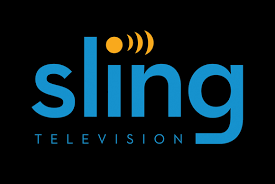 - Sling TV - $20 monthly (one device at a time), several add on packages are available, but this is the cheapest way to add access to some of the basic cable networks such as AMC, CNN and ESPN. This is a cheap option if you still really want to have live TV, and especially live sports. (ESPN, TBS, TNT, ESPN2, ABC are all included in the base package).
- Sling TV - $20 monthly (one device at a time), several add on packages are available, but this is the cheapest way to add access to some of the basic cable networks such as AMC, CNN and ESPN. This is a cheap option if you still really want to have live TV, and especially live sports. (ESPN, TBS, TNT, ESPN2, ABC are all included in the base package).
SlingTV requires a broadband internet connection, but so do the rest of these really. Sling TV runs off of a number of set top devices (more on these later) and does not have any of its own hardware. Sling TV does not generate its own content.
- MLB/NHL/NBA – Cost: MLB 85 (single team)/110 (league), NHL ~$130 (league), $105 (single team), NBA $7 (single game), $120 (full season, one team). The NHL and MLB offer you an option to stream all of the games, while the NBA does not offer that yet. The main problem with these packages is that they still black out the local broadcasts, so that means you still need to subscribe to cable in Chicago if you want to watch White Sox games on MLB.tv. All of these services also lower their prices as the season goes on, so if you’re just the kind of person who follows the month before the playoffs start, this works out well for you.
So, there you have four content providers, three sports and a low cost streaming cable option. I would be negligent in my duties if I did not discuss, on drinkfive.com, how you’re going to watch football. Thankfully, almost every game is on broadcast TV, which means all you need is a decent antenna on your HDTV and you’re already getting football games. Half of the Thursday night games (possibly all if Fox picks up the rest of them – and Twitter just signed a deal to manage all of the TNF online content, so who knows what that might entail). Every game on a Sunday is broadcast on free TV - of course, mostly to local markets. The trouble comes when you want to stream the Monday night game – your only option is to purchase Sling TV, have a cable subscription, or have a Verizon phone that offers it. The big fantasy football channel – NFL Red Zone, is also only available through a cable subscription, although again, Verizon users have the option to pay extra to get this straight to their phone, though that’s not really a good TV replacement.
The Devices
 - Roku - ($130 for new Roku 4) – Roku is one of the most established third party suppliers of cord cutting hardware. Roku doesn’t generate any content itself, but does provide a lot of free content through many “channels”, and it also provides apps for its device for people to log into and access. For example, you can use Roku to access your Netflix, Hulu, Amazon, ESPN, HBO and other accounts in order to stream everything. Roku also supports Sling TV.
- Roku - ($130 for new Roku 4) – Roku is one of the most established third party suppliers of cord cutting hardware. Roku doesn’t generate any content itself, but does provide a lot of free content through many “channels”, and it also provides apps for its device for people to log into and access. For example, you can use Roku to access your Netflix, Hulu, Amazon, ESPN, HBO and other accounts in order to stream everything. Roku also supports Sling TV.
Roku is a small device you hook up to your TV via HDMI and connect to the internet via WiFi or Ethernet. This is a way to have a much smaller footprint and much better streamlined setup when compared to an HTPC.
- Amazon Fire – ($85 for FireTV, $40 for Fire Stick) – This is a set top box that can run its own applications, stream content with your Amazon Prime account, and has lots of other features, similar to Amazon Prime, which may be more or less helpful to you. Fire is probably the best in terms of computing capability – it even lets you download and install some games (though not many, storage space is very limited). The Fire Stick has almost all the same capabilities, but has its hardware toned down a little.
 - Chromecast – ($35 for the base and Audio models) – Chromecast is different from the previous two devices in that it doesn’t provide any kind of interface for you to interact with. Chromecast is tiny compared to the other two devices (easy to leave at a hotel room!). Chromecast will just stream the screen of a PC or android device – it then takes over processing the stream and doesn’t need to necessarily burn your phone’s battery down while you use it. There are also mobile and web apps that are Google Cast enabled (HBO, Netflix, Hulu, Spotify, Youtube).
- Chromecast – ($35 for the base and Audio models) – Chromecast is different from the previous two devices in that it doesn’t provide any kind of interface for you to interact with. Chromecast is tiny compared to the other two devices (easy to leave at a hotel room!). Chromecast will just stream the screen of a PC or android device – it then takes over processing the stream and doesn’t need to necessarily burn your phone’s battery down while you use it. There are also mobile and web apps that are Google Cast enabled (HBO, Netflix, Hulu, Spotify, Youtube).
![]() - Apple TV – ($150/32gb, $200/64gb) – Apple TV is a 4th generation standalone set-top device, similar to the Roku or Amazon Fire, and it’s designed to play extra nice with all of your apple products. Apple TV features apps from all of the major streaming networks, and were the first to offer HBO Now, which is thankfully out of its exclusivity period. Apple TV can sync with a computer running iTunes in order to stream photos, music or video.
- Apple TV – ($150/32gb, $200/64gb) – Apple TV is a 4th generation standalone set-top device, similar to the Roku or Amazon Fire, and it’s designed to play extra nice with all of your apple products. Apple TV features apps from all of the major streaming networks, and were the first to offer HBO Now, which is thankfully out of its exclusivity period. Apple TV can sync with a computer running iTunes in order to stream photos, music or video.
- HTPC - Home Theater PC – This is usually an option for hobbyists that want to fully customize everything, By hooking a computer up directly into your entertainment system, you are given a huge amount of options right away – all you need is a wireless keyboard & mouse combo (and the computer, of course). Different software packages, such as XBMC or Plex, will allow you to install apps similar to a Roku and also manage your media library. This is definitely the most expensive option, but also the most customizable one.
- Xbox/Playstation – Both of these gaming consoles offer streaming TV options at this point in the game. Xbox is compatible with most networks, but of course requires you to already have an account, usually through a cable provider. Playstation does currently work with HBO and Epix.
Summary
So, there is a large variety of options currently available for you to make your very own media package. Unfortunately, there is no direct replacement for traditional cable/satellite TV, so there will be tradeoffs based on your own interests. This isn’t always a downside, as people have been clamoring for years for an a la carte option from the big providers so consumers can just get the stations that they want.
We still don’t have the option to just pick what networks we want, but we’re getting closer all the time. Sometimes you just borrow a buddy’s password to catch up on Mr. Robot or something like that and it fills the gap for the shows you don’t have access to. Sometimes the providers themselves are restrictive, perhaps unnecessarily. The best example of this is that while HBO Go is on Roku, you cannot use the app if your HBO subscription is through Xfinity. Just another example of the plethora of red tape that people cut the cord just to avoid.
So, how do you end up saving money? Well, here’s a few example packages that should provide enough entertainment: (Based on the average bill of $99).
#1 (The Standards) – Netflix HD ($10/month), Amazon Prime ($8.25/month), Sling TV ($20/month) comes out to about $39/month. You’ll want to get a Roku for your main TV and probably a Chromecast to take with you and to use on another TV. That will set you back another $165, but you will make that up in the first 3 months. (Savings of $60/month).
#2 (The Thrones Fan) – HBO Now ($15/month), Amazon Prime ($8.25/month), $40 Amazon Fire Stick. For a monthly cost of less than $25, you have access to the entire HBO catalog, as well as everything that Amazon Prime is currently offering. For $65, you can be all set up, much cheaper than one month of cable! Of course, if all you care about is one TV show, you can even cancel HBO when it’s not on (or just subscribe after the season is over and marathon it – not suggested). (Savings of $74/month, but you probably weren’t paying that much to begin with).
#3 (The Everything) – Netflix HD ($10/month), Hulu Plus No Commercials ($12/month), Amazon Prime ($8.25/month), HBO Now ($15/month), Sling TV ($20/month) comes to $66/month, which is still a savings of $33 per month. A package like this, however, compares better to our bulky cable setup at the studio, which is closer to $130/month (meaning you’re still saving about 50%!). To go with this, you’ll want a Roku or Apple TV and probably one or two Chromecasts. (Savings of $33-$64 per month).
One of the best things that the Spring and Summer seasons bring to us each year are the magnificent array of food festivals that spread across the United States. Just right here in the Chicago-land area where drinkfive.com is based, for example, there are thousands of food festivals ranging from small 'taste of' style fests to larger specialized fests featuring ethnic cuisines (GREEK FEST, FIESTAS PUERTORRIQUEÑAS) or centered around specific types of food (NAPERVILLE RIB FEST, ROSCOE VILLAGE BURGER FEST).
I'm certainly not discounting how great some of those can be, but the really interesting fests to me are the ones that go even more in-depth with one specific ingredient. We're taking a closer look at 3 food festivals in the US: Baconfest Chicago, the Gilroy Garlic Festival and the National Lentil Festival. Check out the podcast below, including interviews with Baconfest co-founder Seth Zurer, National Lentil Festival director Alexandria Anderson and Gilroy Garlic Festival President Dave Reynolds.
(Listen to the Retrospectical Podcast, Ep15: Unique Food Festivals in the US)
1. Baconfest Chicago (April 30 - May 1, 2016 | Chicago, IL)

Baconfest started in 2008 as the realization of an idea among a few friends (Michael Griggs, Andre Vonbaconvitch and Seth Zurer), and has since grown to become a "world-class culinary and cultural festival dedicated to all things Bacon". It has been held at the UIC Forum for the past several years, and is always met with sold out crowds and unbridled enthusiasm. The basic idea is to host some of the best culinary minds in Chicago in one place and allow them the freedom to create unique and delicious dishes with a porcine palette. Baconfest also has close ties to charity and works directly with the Greater Chicago Food Depository to provide meals to those locally in need from a portion of the proceeds each year.
(Interview with Baconfest founder Seth Zurer, March 2016)
Tickets for Baconfest Chicago 2016 are still available as of the publishing of this article and you can find more information about pricing and availability here.
Dishes at Baconfest have the distinction of being prepared by some of the most talented and recognized chefs in the Chicago area – here are a few dishes that were served last year, for example:
Woodhaven Bar and Kitchen – Zach Prince
The Ultimate Bacon Bison Bite – cherrywood bacon and goat cheese infused bison with pepperoni aioli and jalapeño, wrapped in smoked bacon and drizzled with a blueberry buffalo bacon dipping sauce
The Bad Apple – Craig Fass
Gulliver’s Travels – porchetta stuffed with jagdwurst (bacon sausage) in a blanket of bacon, apple and jicama Slaw, on a bacon crustini
Honey Butter Fried Chicken – Christine Cikowski & Josh Kulp
Fried Chicken French Toast – with bacon honey butter and maple bourbon syrup
Quince Restaurant – Kristine Antonian
When Pigs Fly – chocolate bacon oreo, bacon pop rocks
Three Floyds Brewpub – Pat Niebling
Bacon and ‘Nduja Hot Link – with bacon jam, pickled fennel and Dark Lord hot sauce
5 Facts about Bacon:
- Starting the day with a high protein, high fat breakfast such as bacon and eggs improves metabolism and further facilitates circulation and digestion!
- 70% of all bacon in the U.S. is eaten at breakfast; and 59% of bacon is consumed on weekdays!
- Bacon is addictive! It contains 6 types of umami, umami produces an addictive neurochemical response.
- Women who are pregnant should eat bacon! Bacon contains choline which helps in fetal brain development.
- Three slices of cooked bacon contains about 100 calories! And almost half of the fat in bacon is “good fat” that can help lower cholesterol (all in moderation).
2. National Lentil Festival (August 19 - 20, 2016 | Pullman, WA)

The National Lentil Festival has been running since 1989 and is hosted in Pullman, WA in the Palouse region, which grows a quarter of the lentils in the United States. In doing some preparation for this article & podcast, I cam across a surprising number of people that weren't really even sure what lentils were. What are they? Well, they’re from the legume family that includes peas and beans as well and it looks like they are just about to break out to be a rock star ingredient over the next few years. Here’s why: they’re the 3rd highest in protein among all nuts and legumes, they have more potassium in a serving than a banana, and they’re loaded with fiber and folate. They’re great in curries, stews, salads, chilis, fritters, soups and just cooked as a side to roast meats like pork or cooked fish like halibut, salmon, etc.
The festival features the Legendary Lentil Cook-off, which flies in several finalists each year to compete for top honors and the $2,000 grand prize. It also boasts live entertainment and a ton of activities and attractions including the 5K Fun Run and the World's Largest Bowl of Lentil Chili. A focus on charity is also present here, and their Feeding Children Everywhere event in 2015 gathered volunteers to hand-package more than 25,000 meals to be given to local people in need. The meals consisted of lentils, dehydrated vegetables, pink Himalayan salt and rice, making the meal all-natural, soy-free, gluten-free, preservative-free, kosher certified and vegan. Nice work, Lentil fest!
(Interview with Lentil Festival Director Alexandria Anderson, March 2014)
Tickets to the 2016 National Lentil Festival are free - so go check it out!
5 Facts about Lentils:
- They were found in the tombs of the Ancient Egyptians in 2400BC.
- The optical lens is named after the Latin word for lentil.
- Lentils come in all shapes and colors – brown, yellow, red and black.
- Lentils are easy to cook and don’t need soaking like dried beans.
- The Soluble fiber in lentils helps keep your cholesterol down and blood sugars under control.
3. Gilroy Garlic Festival (July 29 - 31, 2016 | Gilroy, CA)
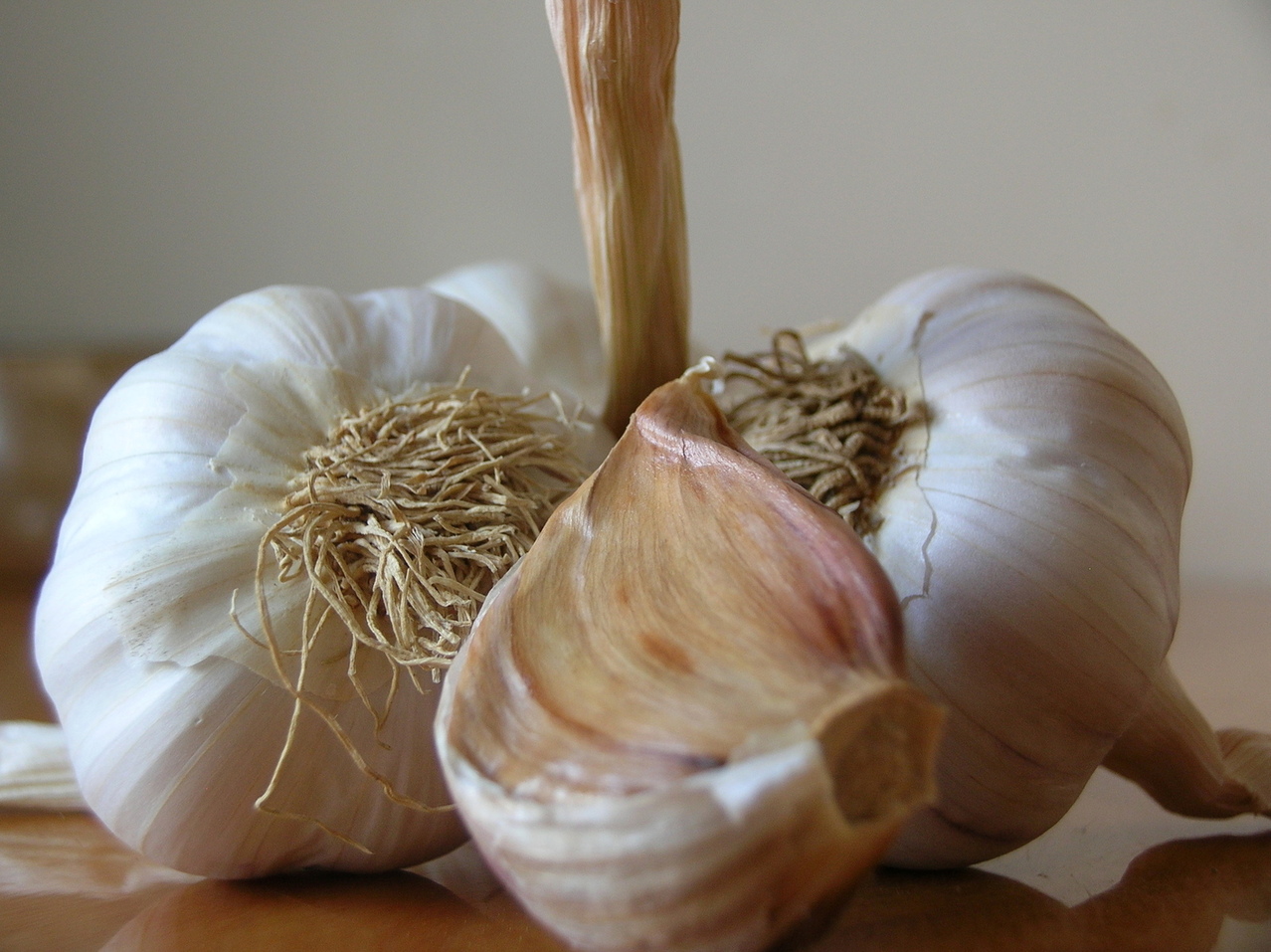
So that brings us to our final food festival, the Gilroy Garlic Festival in Gilroy, CA. Just south of San Francisco. Definitely the oldest (this will be the 38th annual) and the largest-drawing (crowds totaling over 100,000 people over the 3-day) fest that we’re featuring, this thing is a huge event each year! Mainstays of the festival include food booths serving up everything from garlic kettle-corn to garlic ice cream and wine, live music on multiple stages, commercial vendors and multiple cook-off events like the Great Garlic Cook-Off Contest and the Garlic Showdown.
The long-running festival has raised over 10 Million dollars for charities and non-profit organizations since its conception. In the Volunteer Equity Program, instituted by the Gilroy Garlic Festival founders in 1979, net profits from the three-day event are distributed to local schools, sports teams, non-profit groups, and service organizations based on the number of hours logged at the Festival by volunteers for those organizations. Many non-profit groups in Gilroy and surrounding communities depend on the Garlic Festival as their primary fundraiser each year.
(Interview with Garlic Festival President Dave Reynolds, March 2014)
Ticket information can be found here and we urge you to make a trip out to Gilroy for the fest!
5 Facts about Garlic:
- Garlic used to be called Russian penicillin & given to soldiers in WW2 as medicine.
- Garlic is one of the healthiest foods on earth with many health properties: anti blood coagulation, antioxidant, antiviral, antimicrobial, lowers cholesterol, anticancer properties and really helps fight the common cold.
- In ancient Greece, brides carried bouquets of herbs and garlic, not flowers.
- The most cloves of garlic eaten in one minute is 34, achieved by Deepak Sharma Bajagain of Nepal.
- The city of Chicago is named after garlic. 'Chicagaoua' was the Indian word for wild garlic.
So that brings us to our final food festival, the Gilroy Garlic Festival in Gilroy, CA. Just south of San Francisco. Definitely the oldest (this will be the 38th annual) and the largest-drawing (crowds totaling over 100,000 people over the 3-day) fest that we’re chatting about tonight, this thing is a huge event each year!
To celebrate the California festival we have a special beer from Stone Brewing, based in Escondido, CA – called Old Guardian, a barley-wine style ale. [Discuss beer, chat, etc]
Favorite dishes with garlic in them?
1. Garlic used to be called Russian penicillin & given to soldiers in WW2 as medicine.
2. Garlic is one of the healthiest foods on earth with many health properties: anti blood coagulation, antioxidant, antiviral, antimicrobial, lowers cholesterol, anticancer properties and really helps fight the common cold.
12. In ancient Greece, brides carried bouquets of herbs and garlic, not flowers.
14. The most cloves of garlic eaten in one minute is 34, achieved by Deepak Sharma Bajagain of Nepal.
13. The city of Chicago is named after garlic. 'Chicagaoua' was the Indian word for wild garlic.
Recent Articles
-
NFL Confidence Pool Picks & Strategy 2024 - Week 18
 To say this has been a year of uncertainty is an understatement. So many injuries, coaching changes, player issues shaped…in Fantasy Football / NFL
To say this has been a year of uncertainty is an understatement. So many injuries, coaching changes, player issues shaped…in Fantasy Football / NFL -
NFL Confidence Pool Picks & Strategy 2024 - Week 17
 Christmas is indeed the time of giving. And this year, the NFL is giving us a double-header on Christmas Day…in Fantasy Football / NFL
Christmas is indeed the time of giving. And this year, the NFL is giving us a double-header on Christmas Day…in Fantasy Football / NFL -
NFL Confidence Pool Picks & Strategy 2024 - Week 16
 Normally, being just a few weeks away from the end of the season, playoff positions are solidified and we need…in Fantasy Football / NFL
Normally, being just a few weeks away from the end of the season, playoff positions are solidified and we need…in Fantasy Football / NFL -
NFL Confidence Pool Picks & Strategy 2024 - Week 15
 Finally! They’re done! We are heading into week 15 and FINALLY we are done with bye weeks! 16 games a…in Fantasy Football / NFL
Finally! They’re done! We are heading into week 15 and FINALLY we are done with bye weeks! 16 games a…in Fantasy Football / NFL
 Please wait...
Please wait...
